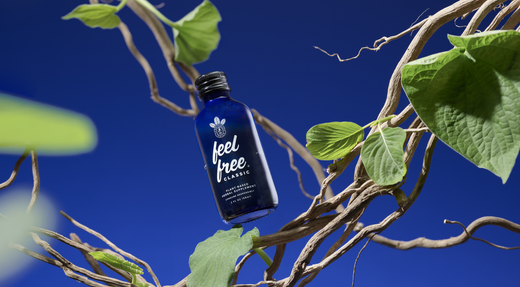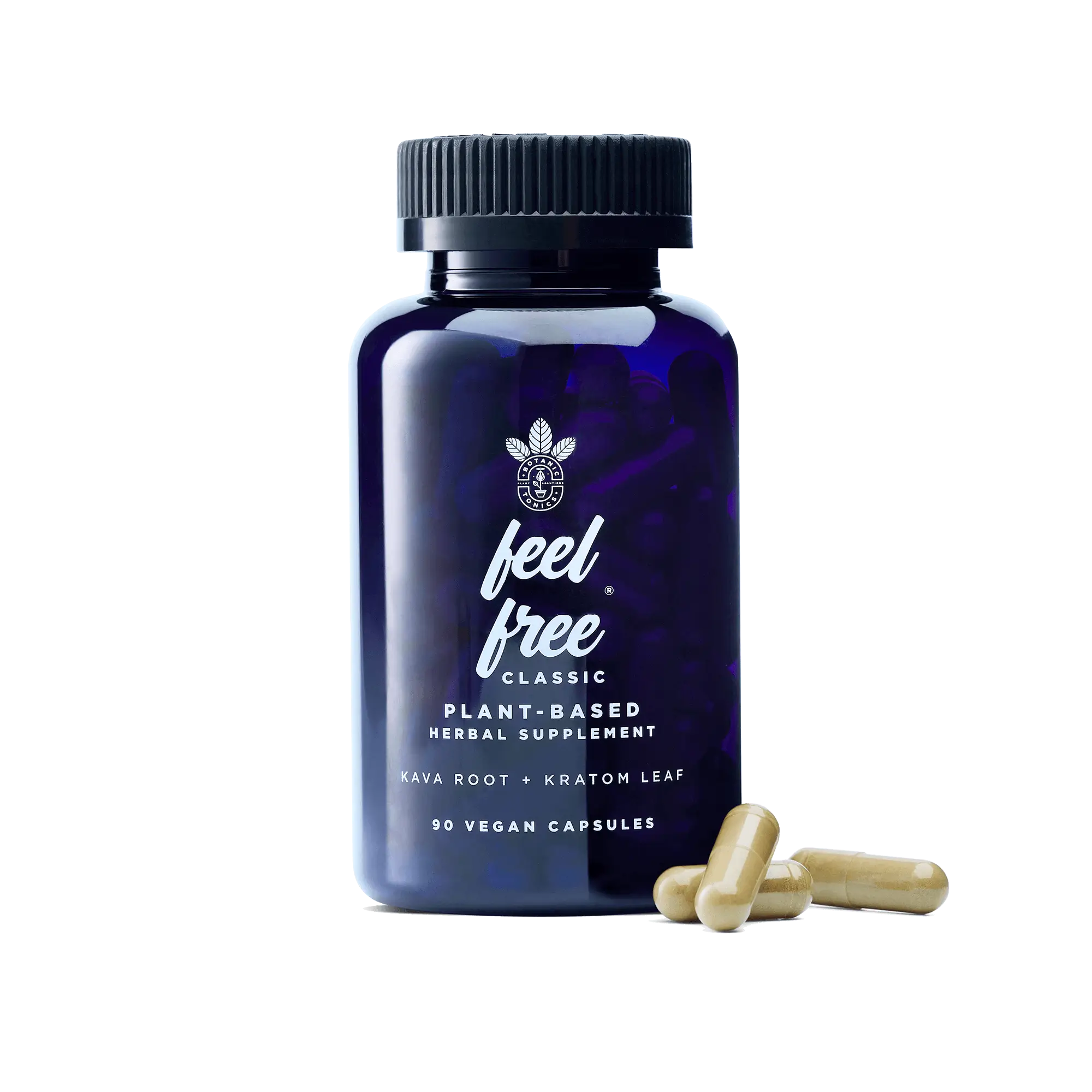Relaxation, mood enhancement, and decrease in occasional anxiety are just a few reasons why many people use the extraordinary kava root in their lives. However, as with any substance, it’s safe to wonder if you can “overdo” it when consuming kava. So, can kava consumption be pushed to a dangerous limit, even if it is a natural substance?
Harvested from the roots of Piper methysticum, kava has been used for centuries in the Pacific Islands as a social and medicinal mean. Today, people worldwide use the kava root for its calming effects, making it a popular mood booster.[1]
Due to the various kava supplement benefits, people are experimenting with different types of kava to see what the hype is all about. While stories and records of kava overdose are rare, it’s still important to know the limits of this ingredient.
To get a better understanding of kava, we’ll explore whether it’s possible to overdose on kava and provide tips on how to safely consume it.
Is It Possible to Overdose on Kava?
Let's get to the bottom of this burning question: Yes, it is possible to overdose on kava—but it’s quite rare and typically non-fatal.
When you consume too much kava, you consume an excess of kavalactones—the compounds in kava that provide calming powers. However, a high amount of kavalactones can lead to unwanted negative effects. For instance, with too high a dose, you may experience these kava overdose symptoms:[2]
- Drowsiness
- Nausea
- Loss of muscle control
- Vomiting
- Mild fever
- Red eyes
In most cases, these symptoms will resolve once the kavalactones leave your body. While there are no reported clinical cases of overdose from short-term kava use, that doesn’t mean an overdose is impossible.[3] As always, you should be responsible when handling any substance and reach out to a medical professional prior to use if you are on any medications or have any preexisting conditions.
Is Kava Safe to Take?
Typically, kava is a low-risk substance when used in moderation. In fact, a study from the Journal of Ethnopharmacology found that kava is safe for human consumption when taken at the recommended amount—and may even help soothe occasional anxiety.[4]
However, that doesn’t mean you can’t overdo it. While kava is considered safe in moderation, there are some concerns about its overuse, especially in the long term. Over the course of months, unregulated and high use of kava could create health issues like:[5]
- Liver damage or toxicity
- Dermopathy (a scaly rash)
- High blood pressure
- Weight loss
- Hair loss
- Partial loss of hearing
- Visual changes, including sensitivity to light
- Low immune function
- Kidney damage
In particular, liver toxicity is a concern when taking kava. However, the risk of liver failure with kava is still very low. Experts estimate that only one of one million daily kava doses leads to liver injury.[6] Additionally, there are only up to 100 reported cases of kava-related liver problems or liver injury and most are linked to the same source of kava raw material.
How Much Kava Should I Take?
Like any substance, kava should be taken in an amount that will avoid an adverse effect. If you consume kava without measurements, you run the risk of experiencing negative effects, especially in the long run.
So, how much kava is a safe amount? Typically, experts recommend your daily kavalactone consumption remain below 250 mg.[7]
To track this, you can check for the exact milligrams or percentage of kavalactones on the packaging of any kava product you use. If listed as a percentage, you’ll need to calculate what percentage of your dose would be kavalactones. For example, 100 mg of kava at 40% kavalactones would be 40 mg of kavalactones.
As you measure your kava dosage, you may be wondering, does kava make you high? In short, an average dose of kava should not give you a high feeling.
How Can I Safely Consume Kava?

To ensure a positive and safe kava experience, keep these tips in mind:
- Purchase from a trusted supplier – The first step in safely consuming kava is to choose a reputable source. Look for a vendor that’s transparent about the sourcing, processing, and regulation of their kava products. For example, feel free kava products are sourced from indigenous areas in the South Pacific, and routinely tested for heavy metals, microbial contamination, and toxic compounds.
- Start small – While 250 mg is the daily upper limit for kavalactones, you don’t have to reach for the kava stars at first. Take it slow, and start at a lower dose for your first few uses. This way, you can judge how kava personally affects you.
- Avoid mixing substances – Mixing kava with other substances may be tempting. However, this is highly discouraged by medical experts. If you combine kava and other substances, the risk of impairment and liver damage greatly increases.[8]
- Consider your health history – Certain health conditions are incompatible or highly risky with kava use. You should avoid kava if you’re pregnant, breastfeeding, diagnosed with a heart or liver condition, or clinically depressed.[9]
Supplement Your Health with feel free

While kava overdose is possible, it’s rare, typically non-fatal, and highly unlikely—especially if you follow consumption recommendations, consider your health history, and purchase your kava from a reputable supplier, like feel free.
Our feel free CLASSIC tonic contains kava root and leaf kratom, and our feel free capsules are made with natural ingredients like kava root, kola nut, lion’s mane mushroom and rhodiola. Experience the kava difference for yourself, and try feel free today.
Sources:
1,8,9, Mount Sinai. Kava kava Information.
https://www.mountsinai.org/health-library/herb/kava-kava
2, Alcohol and Drug Foundation. Kava.
https://adf.org.au/drug-facts/kava/
3, NIH. Toxicity of Kava Kava. https://www.ncbi.nlm.nih.gov/pmc/articles/PMC5868963/
4, NIH. Health policy versus kava (Piper methysticum): Anxiolytic efficacy may be instrumental in restoring the reputation of a major South Pacific crop. https://pubmed.ncbi.nlm.nih.gov/33189846/
5, Addiction Resources. Kava Effects: What Are Its Adverse Reactions? https://addictionresource.com/drugs/kava/side-effects/
6, NIH. Kava Kava - LiverTox. https://www.ncbi.nlm.nih.gov/books/NBK548637/
7, NIH. Kava hepatotoxicity solution: A six-point plan for new kava standardization. https://www.ncbi.nlm.nih.gov/pubmed/21112196
















